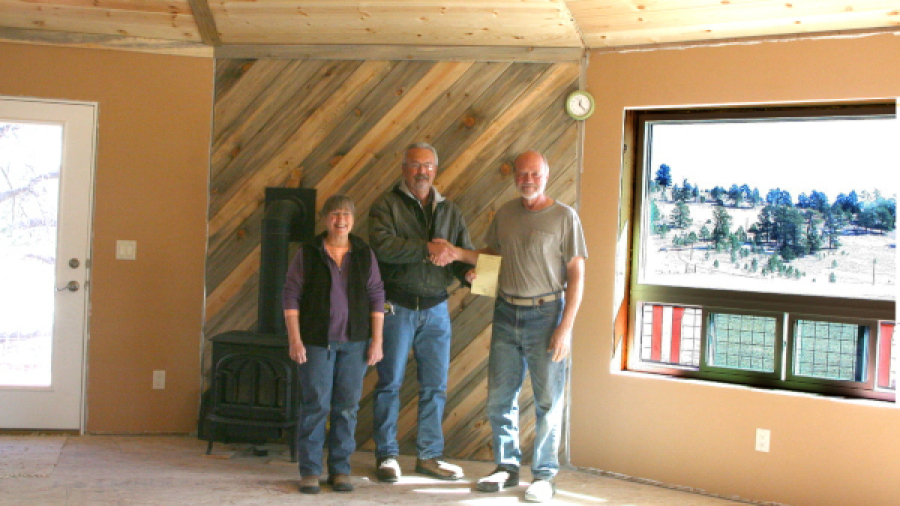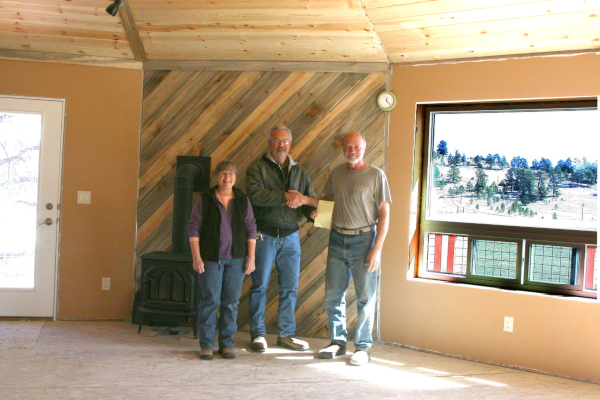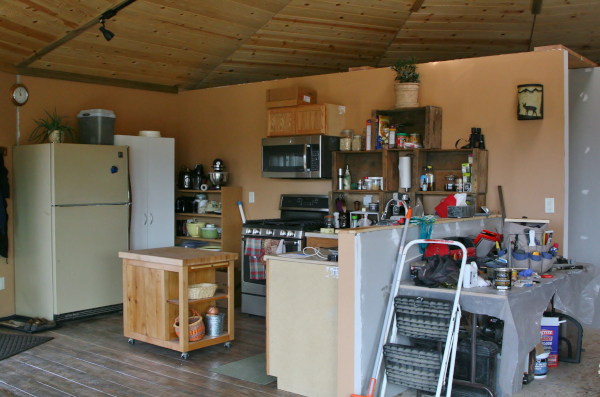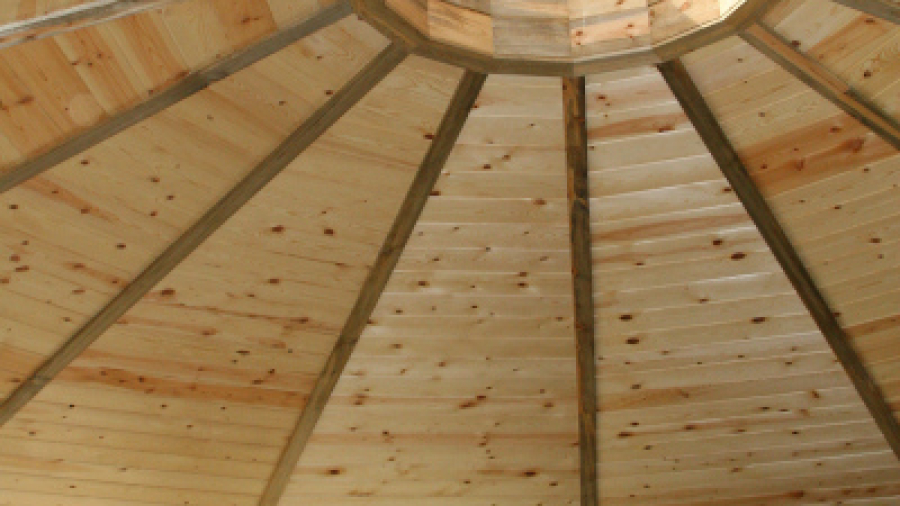This photo, taken this morning, is what the property looks like now, just 2 years after we bought the property. We have really enjoyed our home and property, and are still amazed that we live HERE!
It’s been nice to “take it easy” a bit, and not feel so pressured to work on the house. We still have a lot of little things to do, but the major part of the work is behind us. We’ve had some visitors come enjoy the guest house (the RV), and feel like we know more people here in Guffey than we ever did in Wellington. We’ve enjoyed riding the horses with new friends as well as work with training, and yesterday we took time out to ride to the top of Black Mountain, which overlooks our house. It’s nice to be able to take off and ride, which we didn’t do much at all last year.
Last week Tim completed the first phase of fencing the property. The “South 20” is now fenced and the horses are enjoying much more area to roam and graze. Eventually we will get the north side fenced as well, and will be able to alternate pastures or let them roam the full 40, with the exception of the area around the house.
This photo looks south from the same hill I stood on to take the view in the previous photo. We only wish we could see through the hill to see the horses when they’re on the other side!
The inside of the house is mostly done, and entirely live-able. This panorama looks south, over the living area & tv room to the view out the big picture windows.
This panorama shows the back half of the house, including the kitchen and bedroom.
The kitchen is still in its temporary state, with a make-shift counter and temporary shelves & cabinet. Tim will be building cabinetry in the fall & winter, but until then it is completely functional. Our plans for the bedroom area include custom-made desks and a murphy bed that will become a sofa when not in use as a bed. The bathroom and utility room are behind the kitchen wall.
Goldie has been a great addition to the household. She enjoys being out on the deck, watches everything, and alerts us when anything strange enters the picture, like these deer. She’s learned to heel nicely, has learned to stay near us when off-leash on the property, and to come when called. It’s nice to see her run and play like a dog should! She loves to play ball, and has learned to get the ball out of the container where it’s kept. On hotter days she stays quietly in her shady pen below the deck and when we leave home she can stay there out of the rain.
All in all, we’re happy and healthy and glad to be here.




















 I finally finished all the woodwork on the compression ring (on which the sky dome sits), all the tongue and groove pine and the finish trim between the ceiling segments 8′ down from the top. The rest of the ceiling trim has to wait until the wall trim is installed as the ceiling trim butts to the wall trim.
I finally finished all the woodwork on the compression ring (on which the sky dome sits), all the tongue and groove pine and the finish trim between the ceiling segments 8′ down from the top. The rest of the ceiling trim has to wait until the wall trim is installed as the ceiling trim butts to the wall trim.